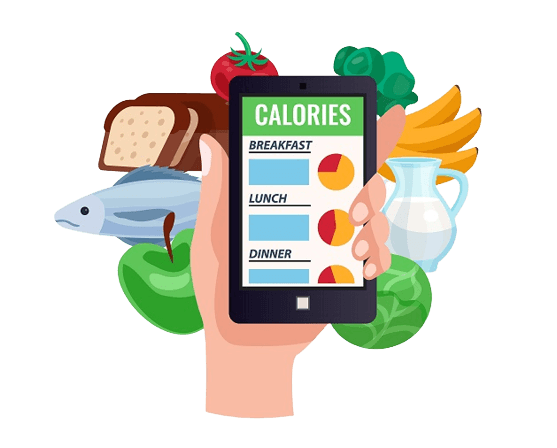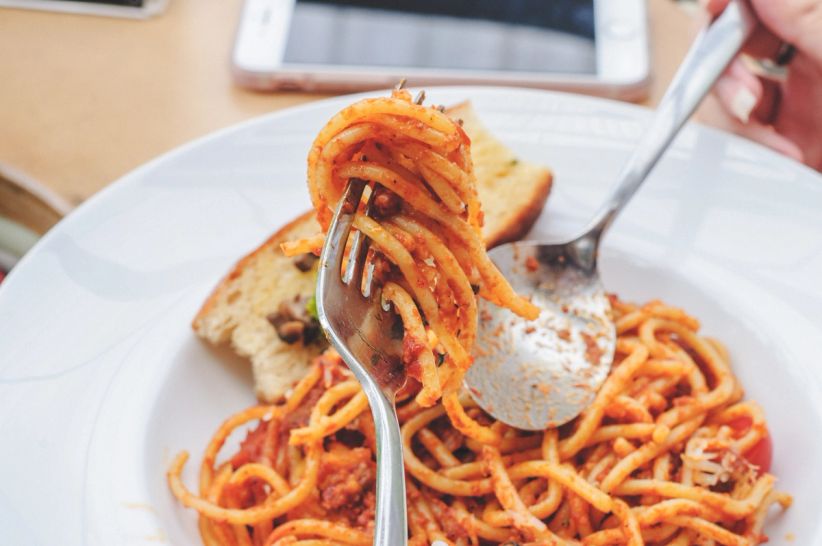Burn More Calories Than You Eat? - Calories In Vs Out
Introduction
Losing weight can seem like an overwhelming task, filled with fad diets and conflicting advice. However, at its core, weight loss is a simple equation: calories in versus calories out. This concept forms the foundation of successful weight management and achieving a healthier lifestyle.
The basics of weight loss: calories in vs calories out
To understand how to burn more calories than you eat, it's crucial to comprehend the basics of weight loss. Calories are units of energy that our bodies obtain from the food we consume. When we consume more calories than our bodies require for daily functioning and physical activities, the excess energy is stored as fat. On the other hand, when we consume fewer calories than our bodies need to maintain their current weight, our bodies tap into those stored fat reserves for energy. This creates a calorie deficit and ultimately leads to weight loss.
Understanding the concept of burning more calories than you eat
The key principle behind losing weight is creating an imbalance between the number of calories consumed (calories in) and the number of calories burned (calories out). Put simply, if you burn more calories than you consume on a regular basis, your body will start dipping into its fat stores for fuel. However, it's important to note that this doesn't mean you should drastically restrict your calorie intake or embark on extreme diets. It's about finding a sustainable balance that promotes gradual but consistent progress towards your desired weight. By keeping track of both your food intake and energy expenditure, you can gain a deeper understanding of how many calories you're consuming each day and how many you're burning through various activities. Armed with this knowledge, you can make informed decisions about your diet and exercise routine to create an effective calorie deficit. Remember that everyone's needs are different when it comes to caloric intake and expenditure. Factors such as age, gender, body composition, and activity levels play a role in determining your specific requirements. Hence, it's essential to personalize your approach and consult with a healthcare professional or nutritionist if you have any concerns or specific health conditions. In the following sections, we will delve into the specifics of both calories in (what you eat) and calories out (burning calories through exercise and daily activities). By understanding these components in detail, you'll be equipped with the necessary tools to take charge of your weight loss journey and achieve long-term success. So, let's dive in!
The Role of Macronutrients: Carbohydrates, Proteins, Fats
Subtitle: Fueling Your Body with Purpose When it comes to calories in vs calories out, understanding the role of macronutrients is crucial. Macronutrients, or "macros" for short, are the three main components of our diet: carbohydrates, proteins, and fats. Each macro plays a unique role in providing energy and supporting vital bodily functions. Carbohydrates are often misunderstood and unfairly demonized. They are your body's primary source of energy. They come in two forms: simple and complex. Simple carbs include sugars found in fruits or processed sweets, while complex carbs can be found in whole grains like brown rice or quinoa. Aim for complex carbs as they provide sustained energy levels without causing a blood sugar rollercoaster. Proteins are the building blocks of life. They are essential for repairing tissues and building muscles. Good sources of protein include lean meats like chicken or turkey breast, fish, beans, legumes, tofu, and Greek yogurt. Incorporate protein-rich foods into each meal to ensure you meet your daily requirements. Fats have long been deemed the villain in weight loss journeys but let me debunk that misconception right away! Healthy fats are necessary for various bodily functions such as hormone production and vitamin absorption. Opt for unsaturated fats found in avocados, nuts/seeds (like almonds or chia seeds), olive oil or fatty fish (such as salmon). Limit saturated fats from fried foods or processed snacks.
The Importance of Portion Control and Mindful Eating
Subtitle: Savoring Every Bite Calories aren't just about what you eat; they're also about how much you eat. Portion control plays a significant role in managing calorie intake effectively. Understanding portion sizes can be challenging since we live in an era of oversized meals and limitless buffets. Becoming aware of proper portion sizes is essential in achieving your calorie balance. A simple trick is to use your hand as a portion guide: a palm-sized serving for protein, a fist-sized serving for carbohydrates, and a thumb-sized serving for fats. Beyond portion sizes, practicing mindful eating can make a world of difference. Slow down and savor each bite, paying attention to flavors and textures. By eating more mindfully, you give your brain time to register satiety signals, preventing overeating. Another helpful tip is to avoid distractions while eating, such as watching TV or scrolling through social media. When we are distracted, we tend to consume larger portions mindlessly without realizing it. Make mealtime sacred by focusing solely on the food in front of you.
Debunking Common Misconceptions about "Healthy" Foods
Subtitle: Don't Fall for the Hype In the pursuit of healthy eating, it's easy to fall prey to common misconceptions surrounding so-called "healthy" foods that promise miraculous weight loss or instant health transformations. One common myth revolves around "fat-free" or "low-fat" products being automatically better options. While reducing saturated fats is beneficial, many reduced-fat products compensate by adding extra sugar or unhealthy additives to improve taste – often resulting in higher-calorie alternatives. Another misconception involves fruit juices being synonymous with healthy choices. Yes, fruits contain essential vitamins and antioxidants; however, when juiced and stripped of their fiber content, they become concentrated sources of sugar that can impact blood sugar levels and hinder weight loss goals. Gluten-free products have gained popularity too but let's clarify one thing: unless you have celiac disease or gluten sensitivity, going gluten-free won't necessarily aid weight loss or offer any additional health benefits. Be wary of products labeled as "natural" or "organic." These terms are not regulated, and many products marketed as such can still contain excessive amounts of sugar, unhealthy fats, or artificial additives. It's always best to read the ingredient list and be skeptical of marketing buzzwords. By understanding the role of macronutrients, practicing portion control, and debunking common misconceptions about "healthy" foods, you can make informed choices when it comes to your calorie intake. Remember: knowledge is power when it comes to achieving a healthy balance between calories in and calories out!
Calories Out: Boosting Your Metabolism
Exploring the factors that affect your metabolic rate
Your metabolic rate, simply put, is the amount of energy or calories your body burns at rest to keep you alive and functioning. It's influenced by a variety of factors, and understanding them can help you make informed decisions about boosting your calorie burn.
Age, Gender, and Genetics
Unfortunately, as we age, our metabolic rate tends to slow down. This is because our bodies naturally lose muscle mass and gain fat as time goes by. Additionally, men generally have higher metabolic rates compared to women due to their higher muscle mass and testosterone levels. However, don't let these factors discourage you! While they do play a role in metabolism, they are not entirely responsible for it. Genetics also contribute to individual differences in metabolic rates. Some people are blessed with faster metabolisms while others might struggle with a slower one. But fear not! You have the power to influence your metabolism through lifestyle choices such as exercise and diet.
Muscle Mass and its Impact on Calorie Burn
When it comes to burning calories efficiently, muscle mass is your secret weapon. Unlike fat tissue which consumes fewer calories at rest, muscle tissue is metabolically active and requires more energy even when you're just lounging on the couch binge-watching your favorite TV show. By incorporating strength training exercises into your fitness routine, you can build lean muscle mass which increases your basal metabolic rate (BMR). With more muscles in action throughout the day, even mundane tasks like doing laundry or grocery shopping become opportunities for torching extra calories.
Hormonal Influences on Metabolism
Hormones play a pivotal role in regulating metabolism. For instance, thyroid hormones produced by the thyroid gland directly impact metabolic rate. Hypothyroidism, a condition where the thyroid gland is underactive, can lead to a slower metabolism and weight gain. Additionally, hormones such as insulin and cortisol also influence how efficiently your body burns calories. Insulin helps regulate blood sugar levels but can also promote fat storage if not properly managed through a balanced diet. On the other hand, cortisol, often referred to as the "stress hormone," can increase appetite and promote fat storage when levels are chronically elevated. Understanding these hormonal influences on metabolism emphasizes the importance of adopting healthy lifestyle habits that support hormone balance. By managing stress levels, eating a balanced diet, and engaging in regular exercise, you can optimize your metabolism for efficient calorie burn. Various factors influence your metabolic rate and the number of calories you burn throughout the day. While age, gender, genetics, muscle mass, and hormones all play their part in determining your metabolism's efficiency, it's important to remember that you have control over many aspects of your overall calorie burn. Through regular exercise routines that include strength training to build lean muscle mass and make smart dietary choices that balance nutrients while minimizing stressors on your body's hormonal systems - you can maximize your calorie-burning potential and achieve sustainable weight management goals.
Exercise for Calorie Burn
Cardiovascular exercises that torch calories efficiently
When it comes to burning calories, cardiovascular exercises are your best friends. These activities get your heart rate up and help you break a sweat, making them excellent options for calorie burn. Running, cycling, swimming, and HIIT workouts are all fantastic choices to ignite the calorie-burning furnace within you.
Running:
Running is a tried-and-true method to burn calories efficiently. Whether you prefer jogging around your neighborhood or hitting the trails in a local park, running engages major muscle groups and elevates your heart rate significantly. The faster and longer you run, the more calories you'll torch. For an added challenge and variety, consider incorporating uphill sprints or interval training into your routine.
Cycling:
Cycling is not only a great way to commute or explore scenic routes; it's also an excellent calorie-burning activity. Whether you're riding a stationary bike at the gym or pedaling outdoors on a bicycle, this low-impact exercise can help you burn serious calories while being gentle on your joints. To intensify the workout and maximize calorie burn, try incorporating uphill climbs or joining indoor cycling classes.
Swimming:
Diving into the pool doesn't just offer relief from scorching summer days; it also provides an all-around body workout that burns calories effectively. Swimming engages multiple muscle groups simultaneously while offering resistance against water's natural buoyancy. Whether you prefer freestyle strokes or opt for more challenging butterfly strokes, swimming can help you shed excess pounds while being gentle on your joints.
HIIT Workouts:
HIIT (High-Intensity Interval Training) workouts have gained immense popularity due to their ability to torch calories in a short amount of time. These workouts involve alternating between intense bursts of exercise and brief recovery periods. HIIT routines can be customized according to your fitness level and preferences, incorporating exercises like burpees, mountain climbers, or jumping jacks. The intense nature of HIIT workouts not only burns calories during the session but also increases your metabolic rate post-workout, resulting in a prolonged calorie burn.
Strength training for long-term calorie expenditure
While cardiovascular exercises are fantastic for immediate calorie burn, it's essential not to overlook the power of strength training when aiming for long-term calorie expenditure. Building lean muscle mass through targeted strength training exercises not only sculpts your physique but also increases your resting metabolic rate (RMR), allowing you to burn more calories even at rest.
Building lean muscle mass:
When you engage in resistance training exercises like weightlifting or bodyweight workouts, you stimulate muscle growth. As muscles require more energy to maintain than fat does, having a higher ratio of lean muscle mass increases your RMR. This means that even when you're not exercising actively, your body burns more calories throughout the day.
Incorporating compound exercises:
Compound exercises involve multiple joints and major muscle groups working simultaneously. Examples include squats, deadlifts, bench presses, and pull-ups. These movements elicit a higher metabolic response compared to isolation exercises that target smaller muscle groups individually. By focusing on compound movements during strength training sessions, you maximize efficiency by burning more calories within a shorter timeframe. By incorporating cardiovascular exercises that torch calories efficiently alongside strength training for long-term calorie expenditure into your fitness routine, you can create a balanced approach for burning calories effectively. Remember to tailor your workouts based on personal preferences and physical capabilities while gradually increasing intensity over time. Stay consistent and motivated on this journey towards achieving the elusive goal of burning more calories than you eat!
Non-Exercise Activity Thermogenesis (NEAT)
While structured exercise is undoubtedly beneficial, it's important to recognize that your daily activities also contribute significantly to your overall calorie burn. This is where Non-Exercise Activity Thermogenesis (NEAT) comes into play. NEAT refers to the energy expended through activities other than deliberate exercise, such as walking, cleaning, and even fidgeting.
Understanding the impact of daily activities on calorie burn
Believe it or not, even the simplest tasks can make a difference in your calorie expenditure. Engaging in physical activities throughout the day can increase your metabolic rate and help you burn extra calories. It's not just about going for a run or hitting the gym; every step counts towards achieving that calorie deficit.
Walking instead of driving or taking the elevator
In our modern world filled with conveniences, we often overlook opportunities to incorporate physical activity into our daily routines. Instead of hopping into your car for short distances, consider walking or cycling instead. Not only will you save on gas money and reduce emissions but opting for this mode of transportation will also help you burn more calories. Likewise, ditching elevators and escalators in favor of taking the stairs is another simple yet effective way to increase NEAT. Climbing stairs engages multiple muscle groups and elevates your heart rate, promoting calorie burn while toning your lower body muscles.
Standing desks and active sitting alternatives
We're all familiar with the sedentary lifestyle that comes with office work: hours spent sitting at a desk staring at a screen. However, revolutionary alternatives such as standing desks have gained popularity for their potential health benefits. A standing desk allows you to work while standing upright rather than being slouched over in a chair. This small change can significantly impact your NEAT, as standing burns more calories than sitting. Additionally, using stability balls or active sitting chairs that engage your core muscles can also be beneficial in promoting movement and increasing calorie burn while at work.
Tips to incorporate NEAT into your everyday life
Here are some tips to help you incorporate NEAT into your everyday life:
- Take short walks during breaks or after meals.
- Park your car farther away from the entrance to get some extra steps.
- Use a pedometer or fitness tracker to monitor your daily step count and set goals for yourself.
- Engage in household chores actively, such as vacuuming, sweeping, and gardening.
- Incorporate stretching or short exercises during television commercials or work breaks.
Remember, the cumulative effect of these small changes can add up over time and make a significant difference in helping you achieve a calorie deficit. By incorporating NEAT into your daily routine, you can maximize calorie expenditure without even realizing it!
Calories In vs Calories Out: Striking a Balance
The importance of tracking food intake and energy expenditure
When it comes to managing your weight, tracking your food intake and energy expenditure is crucial. By keeping a record of what you eat and how much you exercise, you gain valuable insight into your habits and can make informed decisions about your calorie balance. There are several ways to track your intake: from smartphone apps that help count calories to old-fashioned pen and paper. Find a method that works for you and stick with it. Similarly, tracking your energy expenditure is equally important. This includes not only the calories burned during exercise but also the energy used in everyday activities like walking, cleaning, or even fidgeting. Understanding where your calories are going helps you identify areas where you can make adjustments to achieve a healthy balance.
Calculating your Total Daily Energy Expenditure (TDEE)
To strike the right balance between calories in and out, it's essential to determine your Total Daily Energy Expenditure (TDEE). Your TDEE represents the total number of calories you burn in a day, taking into account factors such as age, gender, activity level, metabolic rate, and body composition. Calculating TDEE requires multiplying your Basal Metabolic Rate (BMR), which is the number of calories needed for basic bodily functions at rest, by an activity factor that reflects how active you are throughout the day. Various formulas exist online to estimate BMR based on factors like height, weight, age, and gender. Once you have calculated your BMR accurately estimated daily activity level using an appropriate activity factor scale (e.g., sedentary lifestyle = 1.2; moderately active = 1.55), multiply these values together to obtain an estimate of TDEE.
How to create a sustainable caloric deficit for weight
Creating a caloric deficit is essential for weight loss, but it is crucial to do so sustainably. Drastically reducing calories can lead to muscle loss and a slower metabolism, making long-term weight management more challenging. Instead of resorting to extreme measures, focus on creating a moderate caloric deficit. Aim to reduce your daily calorie intake by 500-750 calories below your TDEE, as this can lead to a gradual and sustainable weight loss of about 1-2 pounds per week. Be mindful of what you eat and choose nutrient-dense foods that help keep you satisfied. Incorporate plenty of fruits, vegetables, lean proteins, whole grains, and healthy fats into your diet while limiting processed foods high in added sugars and unhealthy fats. Regularly reassess your progress by tracking both your food intake and energy expenditure. Adjust your calorie deficit if necessary based on how your body is responding. Remember that slow and steady wins the race when it comes to healthy weight loss.
Conclusion
Achieving balance in the complex equation of calories in versus calories out is vital for sustainable weight management. By tracking food intake and energy expenditure, calculating TDEE accurately, and creating a modest caloric deficit through smart dietary choices and regular exercise, you lay the foundation for long-term success. Embrace the journey towards achieving a healthy balance in your life. Each small step you take today brings you closer to achieving lasting results tomorrow. Stay motivated by celebrating every milestone along the way – even small victories deserve recognition! Remember that with determination and commitment, you have the power within yourself to achieve your health goals while leading a fulfilling life full of vitality and joy.
About The Author


Get your macronutrients breakdown
Fill out the form below to get a preview of your recommended daily calorie and macronutrient breakdown.

Reverse Diet To Lean Bulk - Macros Included
Reverse Diet To Lean Bulk - Macros Included Introduction to Reverse Dieting Welcome, fitness enthusiasts! Today, we embark on an exciting journey in...

One Muscle Group Per Week To Avoid Overtraining Myth
One Muscle Group Per Week To Avoid Overtraining Myth Introduction In the quest for building a strong and sculpted physique, fitness enthusiasts ofte...



